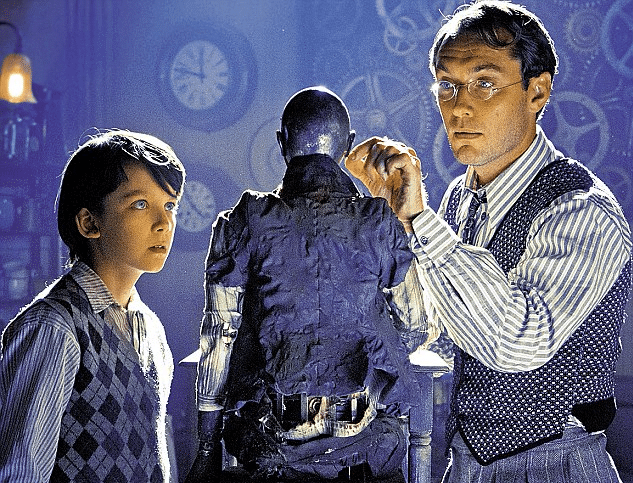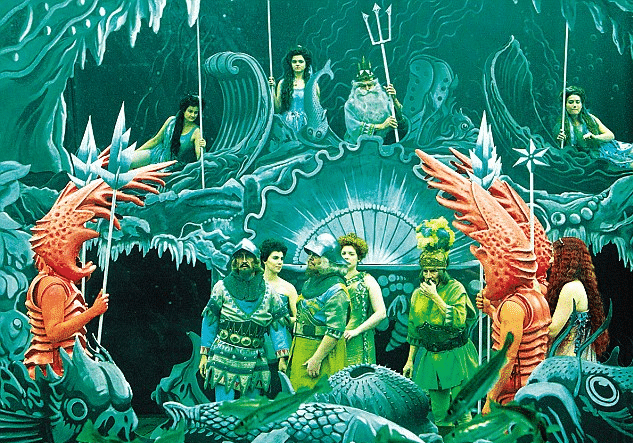He’s been directing for 50 years, but Martin Scorsese has never made a family film. He’s dealt repeatedly with gangsters, vigilantes and corrupt cops, but not once has he turned his hand to a magical, heartwarming fairy tale…until now.
Released on December 2, Hugo is filmed on enormous, awe-inspiring sets at Shepperton Studios, it stars Ben Kingsley as pioneering French movie director Georges Méliès and Sacha Baron Cohen as an endearingly shambolic station inspector, with brief turns from Jude Law and Ray Winstone.
The film is a fantasy adventure, set in Montparnasse station in Paris at the turn of the 20th century. It’s adapted from 2007’s highly acclaimed children’s book The Invention Of Hugo Cabret, a 540-page tome by Brian Selznick that plays with the real-life story of Méliès, an early cinematic alchemist whose fantastical short films, such as 1902’s A Trip To The Moon, continue to inspire film-makers today.
Méliès didn’t make much money from his film work, and as the big French and American movie studios took off, he went bankrupt. His films were subsequently seized by the French army and melted down into boot heels during World War I.
He ended up working in a toy shop at Montparnasse station. Framing his story in the book is that of the orphan Hugo, who has to unlock a secret left to him by his dead father, which eventually leads him to Méliès. The relationship between a boy and his cinema-loving father was something that resonated with Scorsese.
‘My father often took me to the movies when I was a child,’ says the director.
‘The movie theatre was a special place for us. It was a time for us to be alone and to share powerful emotional experiences together.’
Hugo was primarily shot at Shepperton, where the vast sets included a reconstruction of a glass-enclosed studio used by Méliès and originally built outside Paris in 1897.
The set for Montparnasse station was 150ft long, 119ft wide and 41ft high. One of the most striking moments in the film is a train crash, based on a real accident at Montparnasse in 1895 when a speeding locomotive smashed through a vast ornate window.
Scorsese could have recreated the crash with CGI, but visual-effects supervisor Rob Legato had other ideas…
‘My first instinct was to film it,’ says Legato. ‘I’d had experience of filming miniature models on Titanic and Apollo 13. So we constructed the train and station window in 1:4 scale, and the resulting action looked very much like a real, life-sized crash.’
The designers and engineers working on the shot spent four months recreating the 15ft-long train and the 20ft-tall window. The crash itself, powered by a motor beneath the tracks, lasted barely a second-and-a-half, but in the film it’s shown slowed down. Unsurprisingly for a production on this scale, the statistics are impressive.
The film-makers needed 100 miles of electric cable for the train-station set alone – the lighting included 750 large hanging lamps and had a rating of 3.1 million watts, equivalent to over 50,000 60W light bulbs.
There were 34 prop builders, 144 set builders, 60 sets, 40 costume assistants, hundreds of costumes, 500 extras, 15 make-up artists, 13 hairstylists, 50 electricians, 17 camera operators, 42 people on miniatures and hundreds of others all over the world who contributed in some way to the making of Hugo.
Moreover, the film was shot in 3D, which Scorsese hopes will give audiences a visceral thrill, just as Méliès’s own films did over 100 years ago.
The final film, distilled from 135 hours of footage, constitutes a love letter to cinema.
Coming after so many dark thrillers, it’s Scorsese’s celebration of the real magic of the movies.
by Helena Bryanlith




